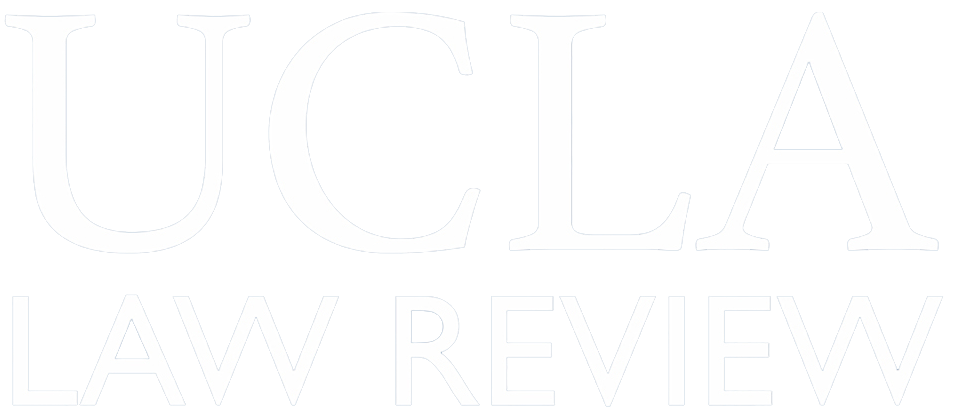State parentage laws, dictating who a newborn child’s first legal parents will be, have been the subject of constitutional challenges in several U.S. Supreme Court and many lower court decisions. All of those decisions, however, have focused on constitutional rights of adults (especially unwed biological fathers) who wish to become, or to avoid becoming, legal parents. Neither courts nor legal...
“Which Is To Be Master,” The Judiciary or the Legislature? When Statutory Directives Violate Separation Of Powers
Statutory interpretation is at the cutting edge of legal scholarship and, now, legislative activity. As legislatures have increasingly begun to perceive judges as activist meddlers, some legislatures have found a creative solution to the perceived control problem: statutory directives. Statutory directives, simply put, tell judges how to interpret statutes. Rather than wait for an interpretation...
Normative Methods for Lawyers
Normative arguments are crucial for the rule of law, and lawyers need to know how to make and defend claims of morality and justice. In recent years, however, cost-benefit and efficiency analysis appear to have taken over most legal scholarship and many law school classroom discussions. Such analysis suggests that the sole goal of the legal system should be to maximize human welfare, which can be...
The Neglected Right of Assembly
This Article considers changes in both our understanding of the constitutional right of peaceable assembly and our regulatory practices with respect to public assemblies. It shows that through the late nineteenth century the state could only interfere with gatherings that actually disturbed the public peace, whereas today the state typically regulates all public assemblies, including those that...
Red: Racism and the American Indian
How does racism work in American Indian law and policy? Scholarship on the subject too often has assumed that racism works for Indians in the same way that it does for African Americans, and has therefore either emphasized the presence of hallmarks of black-white racism, such as uses of blood quantum, as evidence of racism, or has emphasized the lack of such hallmarks, such as prohibitions on...
The Supreme Court as "Prime Percolator": A Prescription for Appellate Review of Questions in Patent Law
Generally speaking, the Supreme Court of the United States is a tribunal with the final say on “what the law is.” But the desirability of the Supreme Court’s acting as “final law sayer” is questionable in patent law, where the Court primarily reviews the work of the Federal Circuit, a comparatively expert body having virtually exclusive jurisdiction over initial appeals. Nonetheless, in recent...
Transgender Youth, Adolescent Decisionmaking, and Roper v. Simmons
Transgender youth who seek access to hormones encounter a number of barriers that frustrate their ability to express their gender identity and exacerbate the effects of the overwhelming levels of discrimination and harassment they face on a daily basis. Because the parents of transgender youth are often hostile or absent, the parental consent requirement imposed by informed consent laws adds to...
International Travel and the Constitution
This Article makes the case for the fundamental right of U.S. citizens to leave their country and return home again. Surprisingly, Americans do not enjoy such a fundamental right. Under current U.S. Supreme Court precedents, the right to travel abroad is merely an aspect of liberty that may be restricted within the bounds of due process. The controversial No Fly List is one such result. Anyone...
Seeing and Believing: Mandatory Ultrasound and the Path to a Protected Choice
Several state legislatures now require that before a woman may consent to an abortion, she must first undergo an ultrasound and be offered the image of her fetus. The justification is that without an ultrasound, her consent will not be fully informed. Such legislation, the latest move in abortion regulation, supposes that a woman who sees the image will be less likely to abort. This Article...
The Birth of Rule 144A Equity Offerings
In a groundbreaking deal closed in May 2007, Oaktree Capital Management LLC, a leading private U.S. hedge fund advisory firm, sold a 15 percent equity stake in itself for $880 million. The deal is groundbreaking because it was not structured as an initial public offering (IPO), traditionally the only option for an equity offering of this size by a private company. Instead, it was structured as a...
Unconsciously Regarded as Disabled: Implicit Bias and the Regarded-As Prong of the Americans With Disabilities Act
Much scholarly work has been written detailing the shift away from the original congressional intent behind the Americans with Disabilities Act (ADA), starting with the landmark U.S. Supreme Court decision in Sutton v. United Air Lines. While the U.S. Congress intended the protections under the ADA to be broad, courts have interpreted the act very narrowly, denying protections for many whom...
Taking the "Hate" Out of Hate Crimes: Applying Unfair Advantage Theory to Justify the Enhanced Punishment of Opportunistic Bias Crimes
Should bias crime perpetrators who, for personal gain, intentionally select victims from social groups that they perceive to be more vulnerable be punished similarly to typical bias crime perpetrators who are motivated by group hatred? In this Comment, I apply unfair advantage theory to argue that enhancing the punishment of opportunistic bias crimes is proper because of the perpetrators’...
The Value of a Promise: A Utilitarian Approach to Contract Law Remedies
This Article critically examines the applicability of law and economics, or wealth maximization theory, to contract law by examining this theory from within the consequentialist framework of utilitarianism. Roughly speaking, wealth maximization theory is a consequentialist theory of justice holding that those actions that increase wealth are just and should be allowed, whereas those actions that...
Freeing Exercise at Expression's Expense: When RFRA Privileges the Religiously Motivated Speaker
Congress and more than a dozen states have statutorily expanded the scope of religious liberty beyond that provided for in the U.S. Constitution. These Religious Freedom Restoration Acts (RFRAs), modeled closely after the federal progenitor, afford heightened protection to religious objectors by mandating that laws substantially burdening religious exercise pass strict scrutiny. In this Comment...
